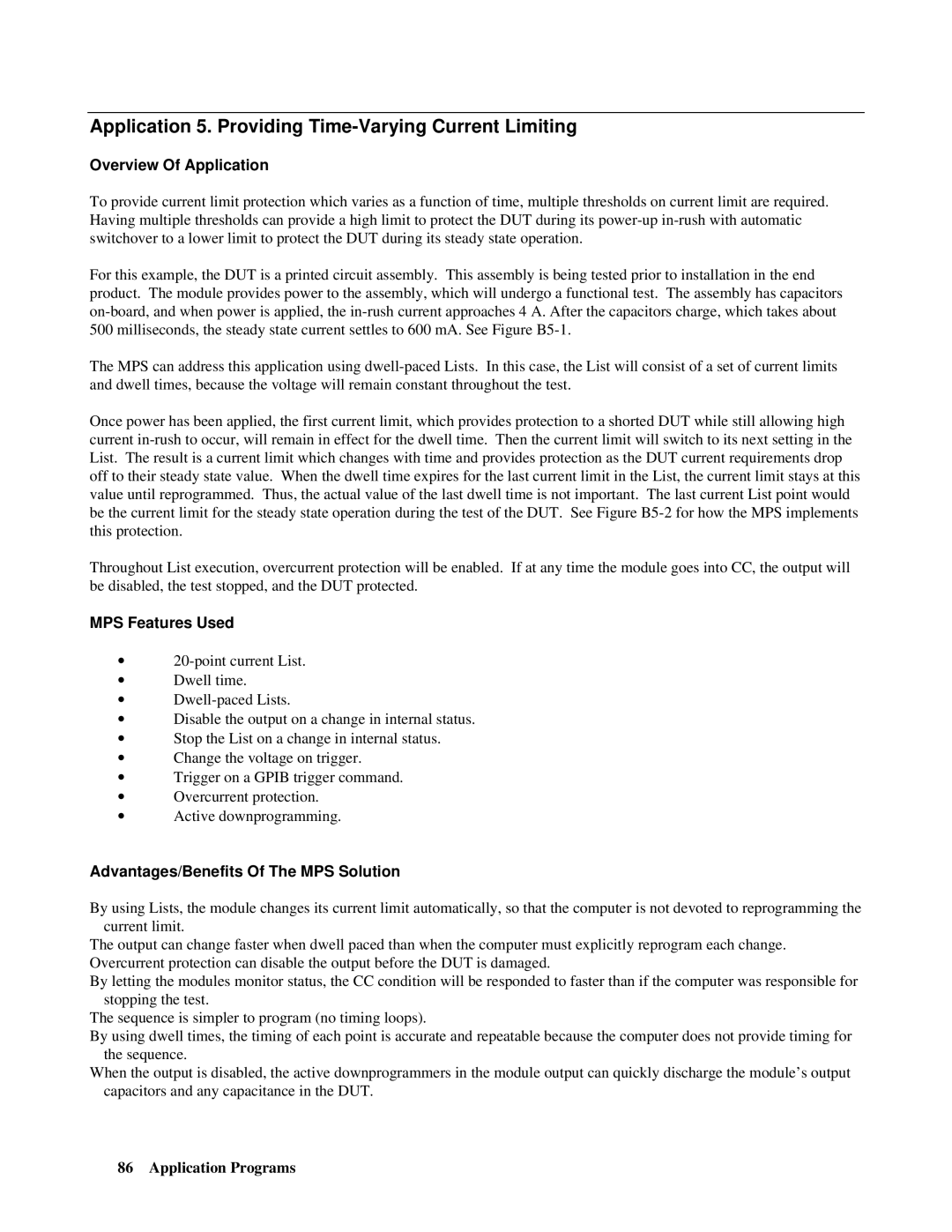Application 5. Providing Time-Varying Current Limiting
Overview Of Application
To provide current limit protection which varies as a function of time, multiple thresholds on current limit are required. Having multiple thresholds can provide a high limit to protect the DUT during its
For this example, the DUT is a printed circuit assembly. This assembly is being tested prior to installation in the end product. The module provides power to the assembly, which will undergo a functional test. The assembly has capacitors
The MPS can address this application using
Once power has been applied, the first current limit, which provides protection to a shorted DUT while still allowing high current
Throughout List execution, overcurrent protection will be enabled. If at any time the module goes into CC, the output will be disabled, the test stopped, and the DUT protected.
MPS Features Used
∙
∙Dwell time.
∙
∙Disable the output on a change in internal status.
∙Stop the List on a change in internal status.
∙Change the voltage on trigger.
∙Trigger on a GPIB trigger command.
∙Overcurrent protection.
∙Active downprogramming.
Advantages/Benefits Of The MPS Solution
By using Lists, the module changes its current limit automatically, so that the computer is not devoted to reprogramming the current limit.
The output can change faster when dwell paced than when the computer must explicitly reprogram each change. Overcurrent protection can disable the output before the DUT is damaged.
By letting the modules monitor status, the CC condition will be responded to faster than if the computer was responsible for stopping the test.
The sequence is simpler to program (no timing loops).
By using dwell times, the timing of each point is accurate and repeatable because the computer does not provide timing for the sequence.
When the output is disabled, the active downprogrammers in the module output can quickly discharge the module’s output capacitors and any capacitance in the DUT.
86 Application Programs
